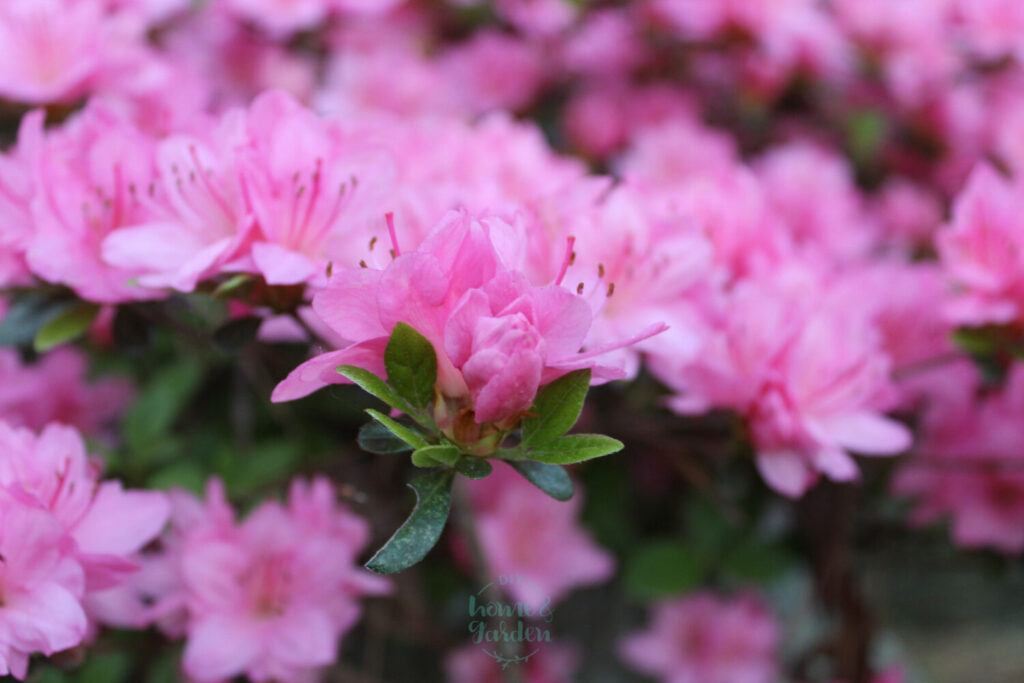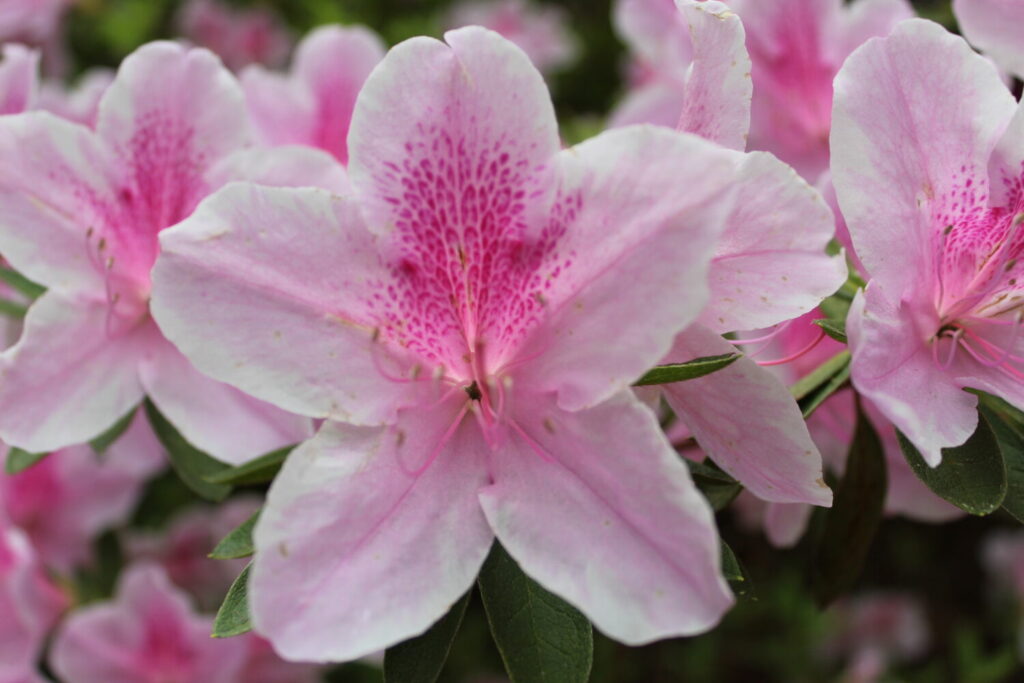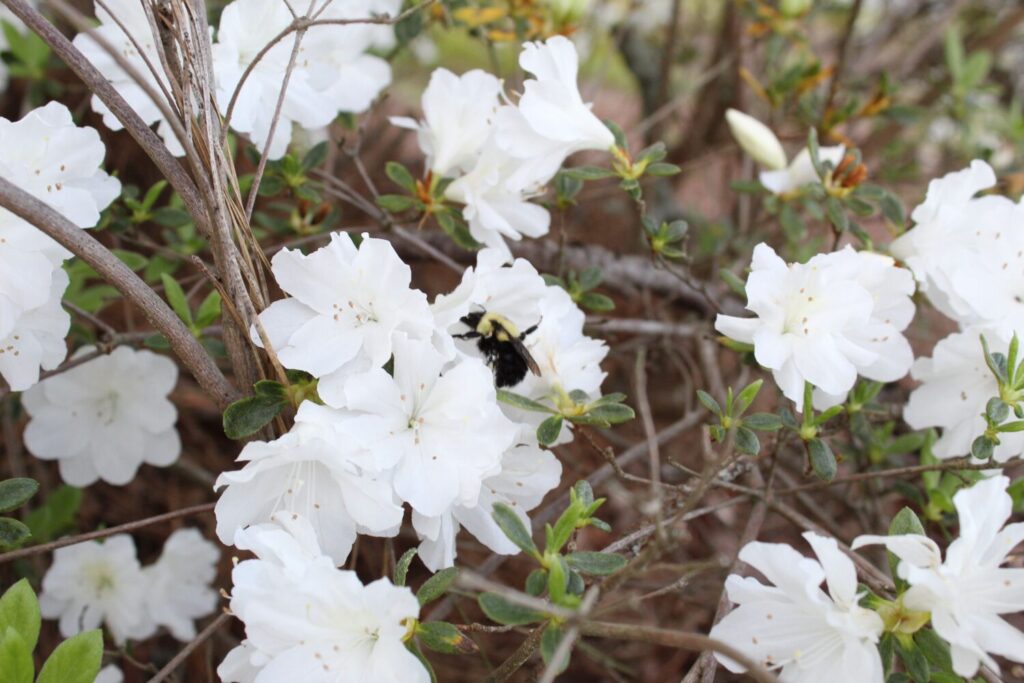Azaleas are stunning flowering shrubs that belong to the rhododendrons sub-family.
They flower in spring, putting forth pink, white, orange, and red flowers—depending on the variety. However, some varieties bloom in early fall and early summer.
Azaleas are classified into two: the evergreen and deciduous types.
The deciduous types are native to Eastern Europe, North America, and Asia, while the evergreens are largely native to Japan.
Perhaps the most outstanding difference between the two is that evergreen azaleas retain most (and in some cases all) of their foliage throughout the year while deciduous lose them in the fall.
Selecting Your Azalea Variety
Azaleas are often classified depending on their bloom time. There are early, mid, and late bloomers.
The early bloomers begin to flower late in the winter through early spring. The mid-season types bloom in late spring, while the late group flowers beginning early summer through fall.
Considering their beauty, you may want to grow the different species and cultivars of azaleas to continuously enjoy their warmth throughout the growing season.
How to Grow and Care for Azaleas

Generally, these are easy-to-grow and care-for shrubs; however, you need to consider a few things.
- Azaleas are long-lived shrubs and therefore require a good planting foundation to guarantee success.
- Amend the soil with peat moss and compost from the beginning to ensure your plants are adequately nourished.
- Plant them in the Spring (if possible) within cool, lightly shaded locations. Exposure to full sun can easily burn the leaves, and especially in the southernmost climates.
- On the other hand, heavy shade can deprive the plants of the necessary oxygen, leading to weaker growth and poor blooming.
- Consider irrigating when planting; then daily until they’re established.
Let’s take a closer look at each of the above statements, so you can achieve success in growing these beautiful flowering shrubs.
Soil
- Azaleas thrive in well-draining, organic-matter-rich, acidic soil with a pH level of 5.5-6.0.
- You may want to consider raised beds or container gardens if you reside in a poorly drained area.
Light
- Azaleas love shady spots and a bit of sun.
- Select a location with morning sun and afternoon shade to help keep the plants’ strength and prevent wilting flowers.
- All-day exposure to the hot sun can easily stress the plants, making them more susceptible to diseases and pests.
Water
- Because they’re shallow-rooted, azaleas can easily suffer water stress when overwatered, leading to root rot.
- And so, keep the soil evenly moist—only water when the soil feels dry to touch.
- These plants need water to bloom, in which case, spring showers may suffice. However, be sure to offer the extra bit if you experience a dry spring season.
- Note: Avoid watering the leaves as that may encourage fungal diseases.
Fertilizer
- The adequate layering of mulch and organic matter you added to your soil (when amending it) should suffice the nutrient needs of your Azaleas.
- However, signs like stunted growth, early leaf drop, or smaller greenish-yellow foliage may signify nutrient deficiency, hence the need to fertilize.
- Consider fertilizing early in the spring or late winter.

Mulching
- Mulching will help maintain the soil temperature, conserve water, and also discourage weeds.
- Use composted pine barks or pine straw, and replenish them annually considering the shallow root system of Azaleas.
Pruning
- Trimming will help maintain a more dense appearance, encourage bushier growth while also enhancing proper ventilation so that your azaleas don’t suffer mildew.
- Trim immediately after the spring blooms fade.
- Do not trim later than July. Pruning too late—during late summer, winter, or fall, may lead to the accidental cutting of the flower buds sprouting for the next year, thereby preventing the plant from blooming.
Propagation
- Azaleas can be grown from seeds. However, it’s not the best method if you would like to end up with new plants that resemble the parent plant.
- The best bet to achieve clones of your favorite azalea is through vegetative propagation—via stem layering or stem cuttings.
- Layering works best with the deciduous varieties, but for the evergreens, use cuttings.
Propagating Azaleas from stem cuttings
- First, be sure to adequately water your selected healthy and vigorous parent plants (before cutting) to help prevent dehydration stress.
- For best results, use semi-hardened wood cuttings—the new growth that’s beginning to harden off—that which can be bent but not too easily.
- Immediately after flowering, in spring, take cuttings (from stem tips) 5-6 inches long—preferably those of one-year-old wood, which can bend without snapping.
- Rip off the leaves right from the lower half to expose the nodes. Then trim the cut ends (using a sharp knife) to just under a leaf node.
- Dust the cut end with a powdered rooting hormone, then insert a third of the lower portion of each stem into some small bucket containing a moist rooting medium—which can be a combination of one-third peat moss, one-third compost, or one-third sand and vermiculite.
- Place the buckets in a sheltered location (with bright indirect light) in your garden.
- Irrigate regularly to keep the potting medium moist.
- It takes about 4-8 weeks for the roots to form, after which you can transfer the new plants to larger pots.
- Continue offering shelter until when they’re ready for planting the next spring.
- Use straw mulch or pine needles to protect the plants from winter frost.
Stem Layering
- Layering is simply root development on a stem, which is still connected to the parent plant.
- Layer in the early fall or early spring before leaves emerge; then wait 1-2 years before transplanting.
- Although you can still transplant your spring-layered plants in the fall (the same year), waiting will allow the new plants to mature faster in a familiar environment, making it easier for them to continue thriving even when relocated to a new location.
Layering steps
- Choose a branch that can be bent easily to the ground without snapping.
- Dig a shallow (3-4 inches long) trench in the branch’s direction, then pull the branch down to the trench—just to see how good it fits.
- Ensure 2-3 inches of the stem is in contact with the soil and that the stem tip extends 6-8 inches above the ground.
- Gently scrape off the outer bark—about an inch—at the point, you would like the contact stem to develop roots.
- Dust the wounded section with powdered rooting hormone, then place the stem in the trench. Cover with soil.
- Place a rock on top of your buried section, so it stays in place.
- The roots should form within 6-12 weeks; however, you’ll want to wait up to two years (before transplanting) to allow the plant’s roots in place.
- To transplant, simply cut the parent stem as close to the ground as possible.
Pests and diseases
Generally, azaleas are free of diseases and pests when offered proper care. However, insects like spider mites and lace bugs can still be a headache.
Lace bugs are more notorious invaders of shrubs grown in full sun, and so you want to offer your azaleas some shade.
Root rot, leaf spots, and petal blight are common in these deciduous shrubs, but you can counter them by ensuring good drainage and mulch application.
 The Takeaway on Growing Gorgeous Azaleas in Your Garden
The Takeaway on Growing Gorgeous Azaleas in Your Garden
Though easy to grow and maintain, azaleas are highly toxic. Ingesting any part of these plants can pose life-threatening complications such as cardiac arrhythmia, especially in children, and symptoms like vomiting, excessive drooling, and weakness in dogs.
And so, keep your children and pets off these shrubs.



